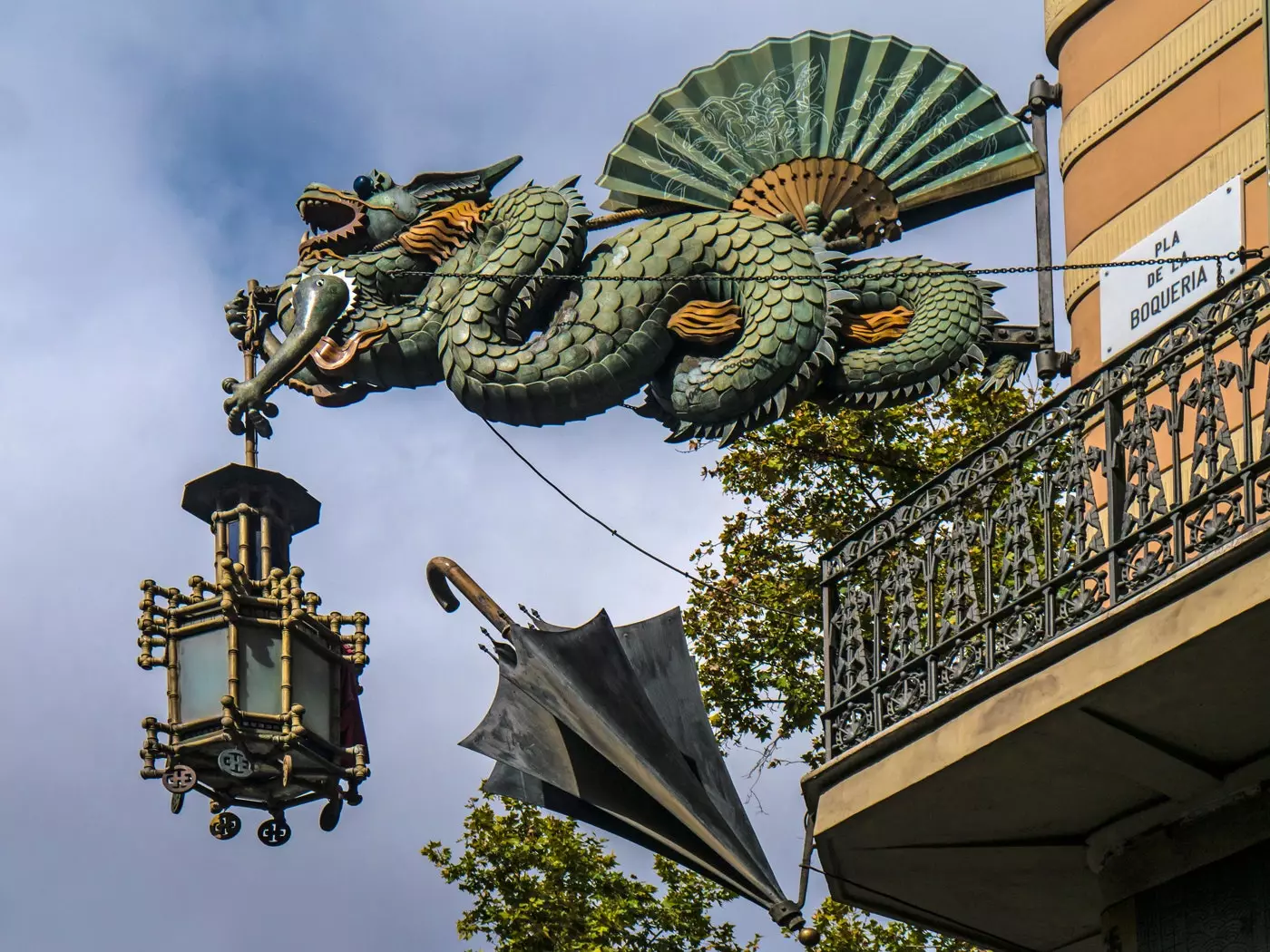
Barcelona, city of a thousand dragons
Belonging to the popular imagination, the dragon It is one of the most represented -fantastic- animals in the whole world. Each culture has given it various characteristics throughout history, thus, in the Far East it is synonymous with knowledge and good luck Y in European folklore it is considered a symbol of evil . Perverse or not, if there is a place to walk among these creatures, it is Barcelona. The Catalan capital serves as a refuge for more than a thousand reptiles that, perched on a facade or watching from a lamp, have taken over the city since times past.
They say that the first dragons "arrived" in Catalan territory in the XV century , Next to the legend of Sant Jordi . His image as a knight and Christian martyr was so deep that, in 1456, he was declared patron saint of Catalonia. But it was his heroic deed, because he killed the dragon that was about to devour a princess, which made him one of the most widespread myths throughout Europe during the Middle Ages.
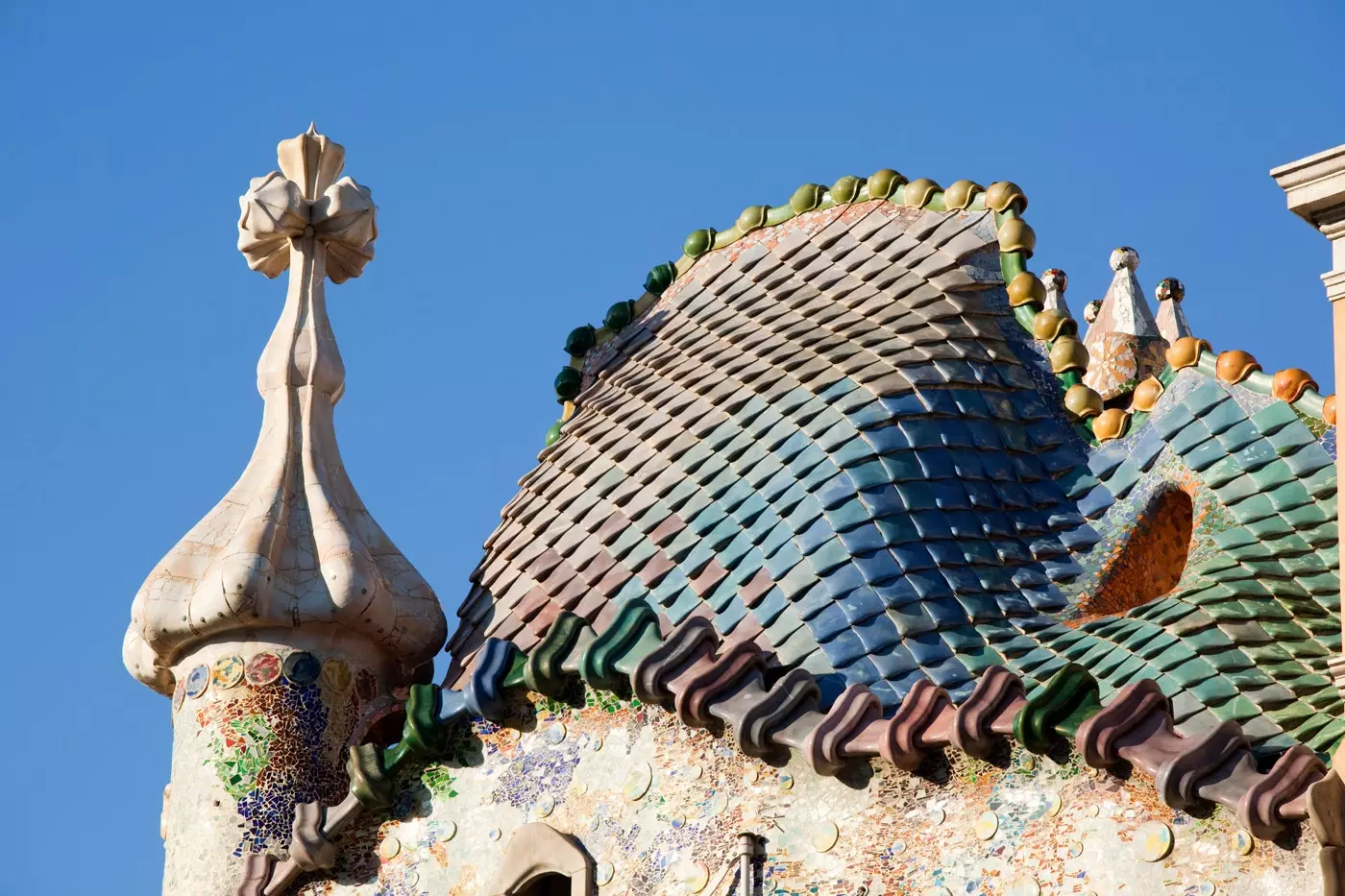
Casa Batlló or the skin of the dragon
The truth is that the Ciudad Condal could have been the scene of the feat of Saint George, since it was an intramural city and was completely surrounded by Roman and medieval walls until well into the 19th century. At that time, the Industrial Revolution brought with it an enormous population growth and it was necessary to demolish part of the walls and carry out an extension, to avoid problems of hygiene and space. Curiously, Eixample is the area with the highest density of dragons , since in its wide streets it was where the majority of modernist buildings were built, an artistic movement that felt an intense attraction for the figure of this animal, for its mythological origin and its connection with a medieval past . Since then, a large number of buildings in Barcelona have given shelter to all kinds of dragons.
Made of wrought iron, stone, stained glass or trencadís , the dragons and lizards that guard Barcelona can be found in all sizes and colors, climbing facades with their sharp claws, under cornices and balconies, or sunbathing like a lizard on a sunny morning. Their representation is full of great symbolism and they are a clear reflection of the ideas of the Renaixença: mythology, history, religion and a revaluation of Catalan culture. It was Antoni Gaudí who gave the city some of his best-known dragons, but not only "Gaudinian creatures" boasts Barcelona, and the city has endless buildings where you can find them.
On the monumental journey that is Passeig de Gracia between the streets of Arago and Consell del Cent appears the stretch known as the " Discord's Apple ”, because in it the three most prestigious and avant-garde architects of the modernist current built, almost rivaling in beauty, three majestic bourgeois palaces: the Casa Lleó Morera, the Casa Amatller and the Casa Batlló.
At number 35 Passeig de Gràcia, the ** Casa Lleó Morera ** was commissioned in 1905 by Lluis Domènech i Montaner to reform the site occupied by the old Rocamora House. It is a formidable building in which, as in most modernist works, the craftsmanship stands out. Peeking around the façade, one can see the dragons in the arcades of the house.
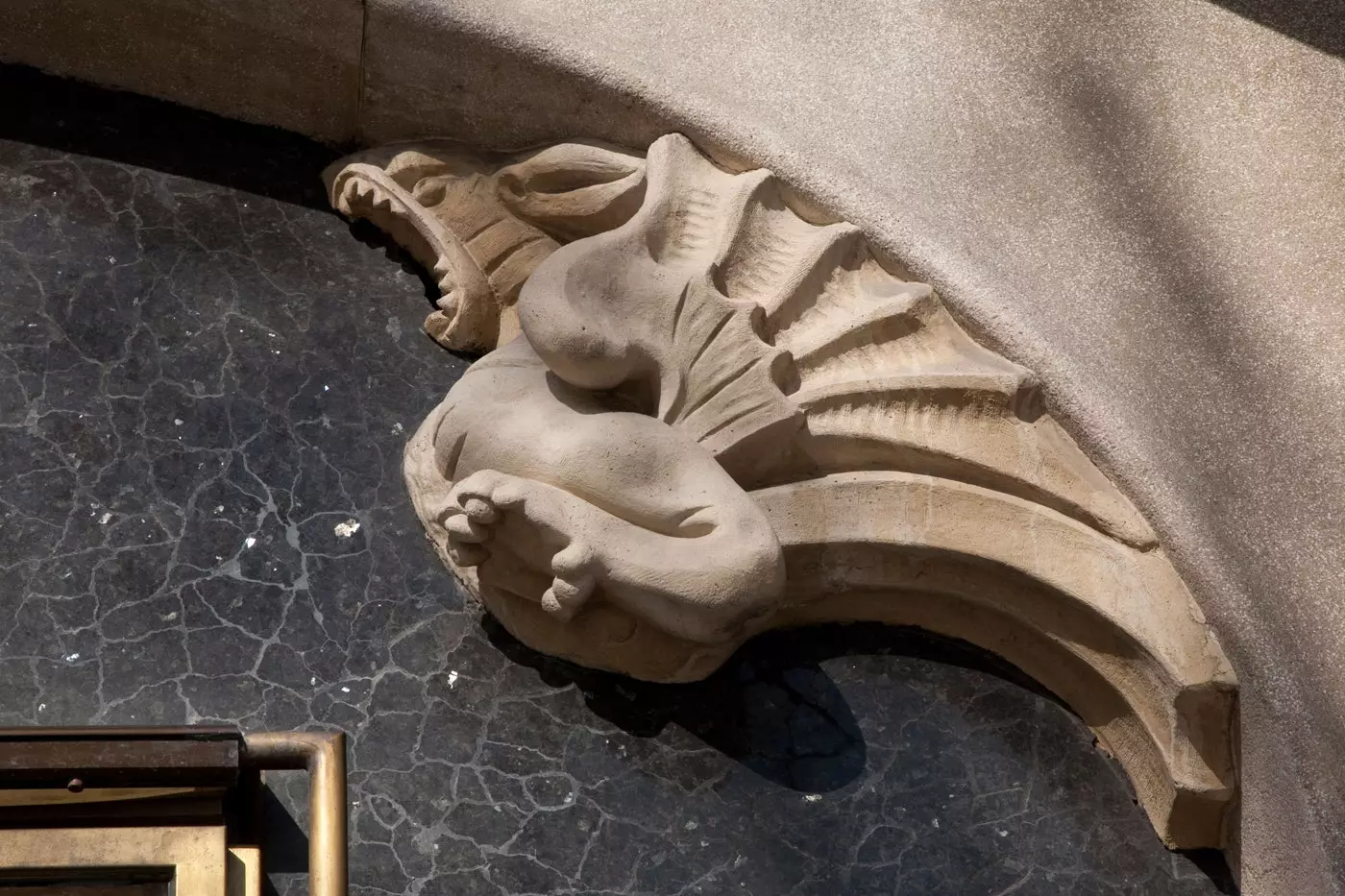
House Lleo Morera
Without giving truce appears, right away, the Amatller House . The building was designed in 1900 by the brilliant mind of Josep Puig i Cadafalch and the result is a combination of Gothic and Flemish styles . In its main entrance, at first glance and separating two asymmetrical doors, the sculpture of a dragon being slain by the lance of Saint George. But if you know how to search the facade well with your eyes, there may be another dragon very close.
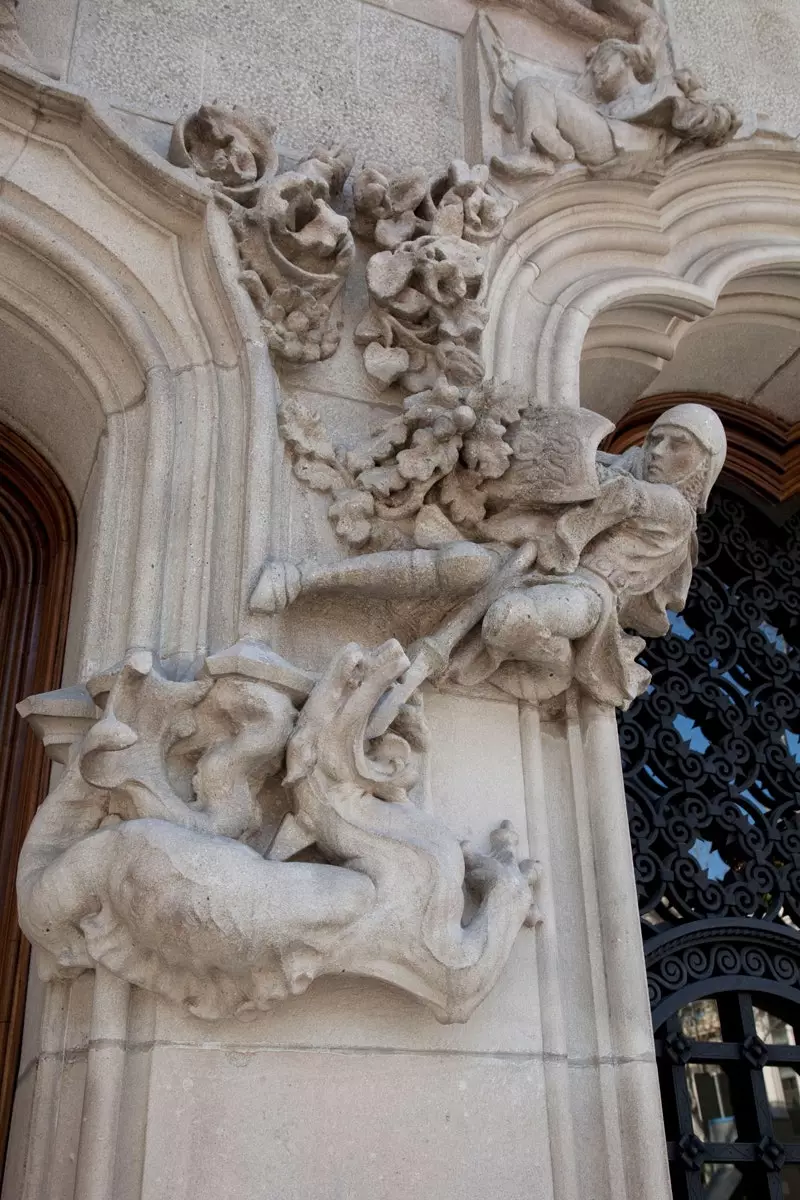
Amatller House
The largest dragon in town occupies the next lot. Well, it was in the Casa Batllo where, in 1906, Antoni Gaudí took the inspiration for this figure one step further, turning the building into an organic representation of the legend of Saint George. The architect designed the roof in such a way that, with its sinuous shapes and ceramic pieces in the form of scales, it would resemble the spine of a gigantic dragon pierced by the spear of Saint George, which is symbolized by the needle tower that culminates the building. .
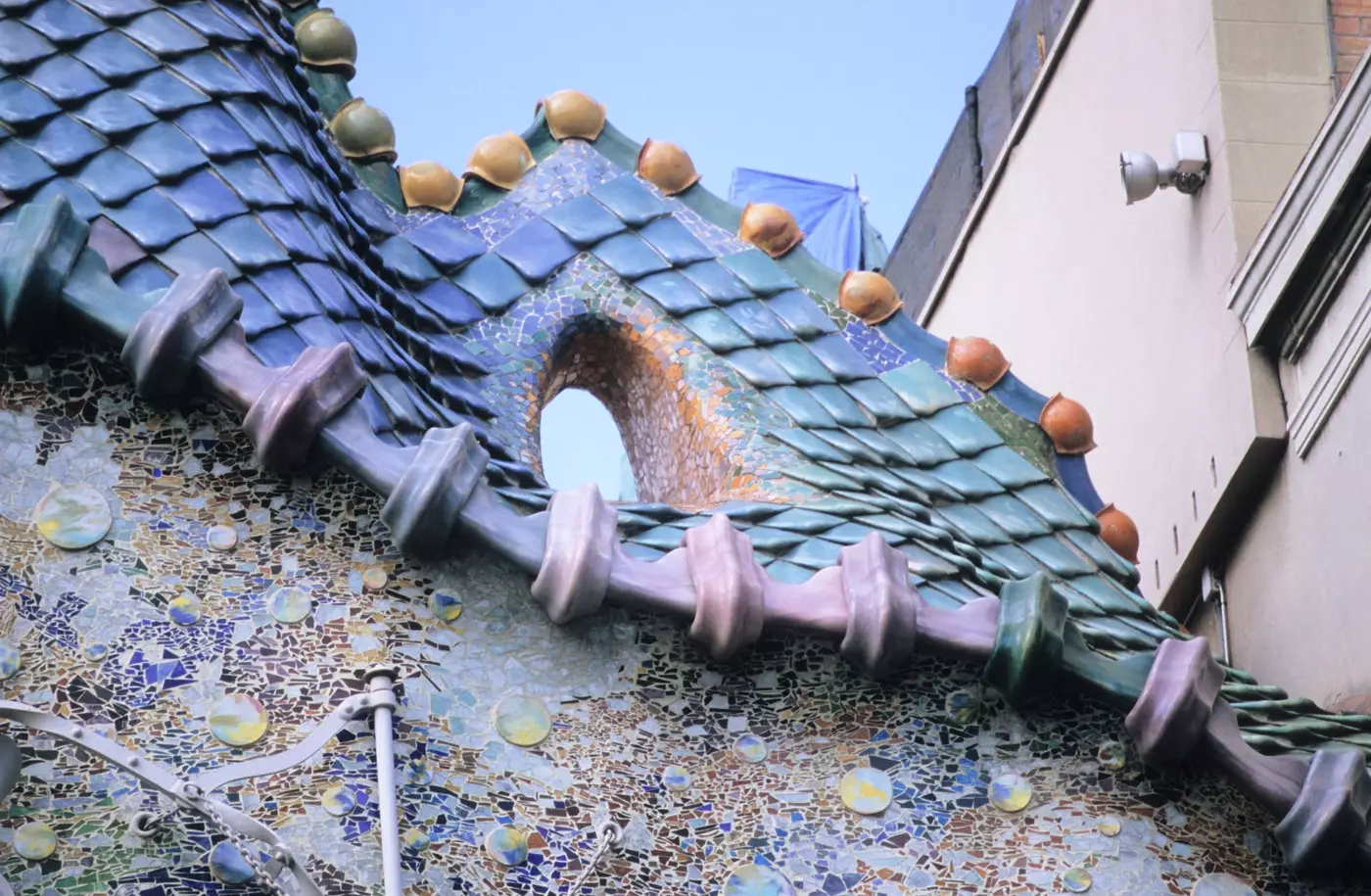
Casa Batlló or the skin of the dragon
Without leaving the Eixample district and located in the 373 Diagonal Avenue appears, with a certain plateresque inspiration, the Palace of the Baró de Quadras , another remodeling carried out by Puig i Cadafalch in 1906 . Its stone facade is sculpted with sculptures that almost bump into each other. And among this ornate ornamentation, in the left corner you can distinguish the image of the legendary fight, and next to the entrance door that of a solitary dragon.
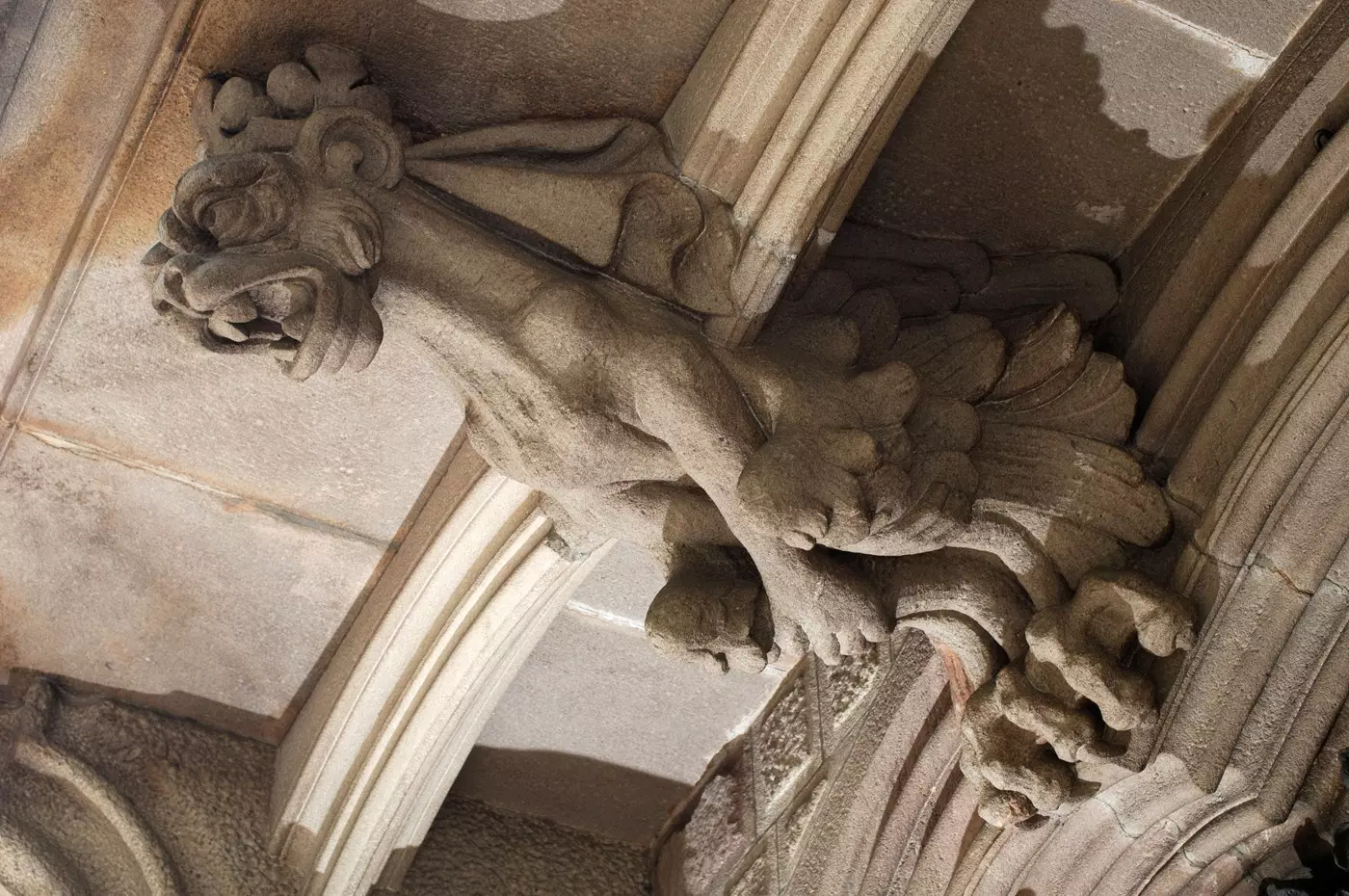
Palace of the Baró de Quadras
Numbers 416-420 of the same avenue are occupied by Casa Terrades or ** Casa de Les Punxes ** which, with its appearance of fairy tale castle , stands out dominant among all the other buildings of the place. It was built in 1905 by Puig i Cadafalch and owes its curious name to the six towers that, crowned by conical needles, preside over the building giving it a medieval appearance with the intention of recalling a glorious past. In this case, at the top of the rear facade, a colorful ceramic ceiling shows the image of the knight saint george who stands triumphant over the downcast beast.
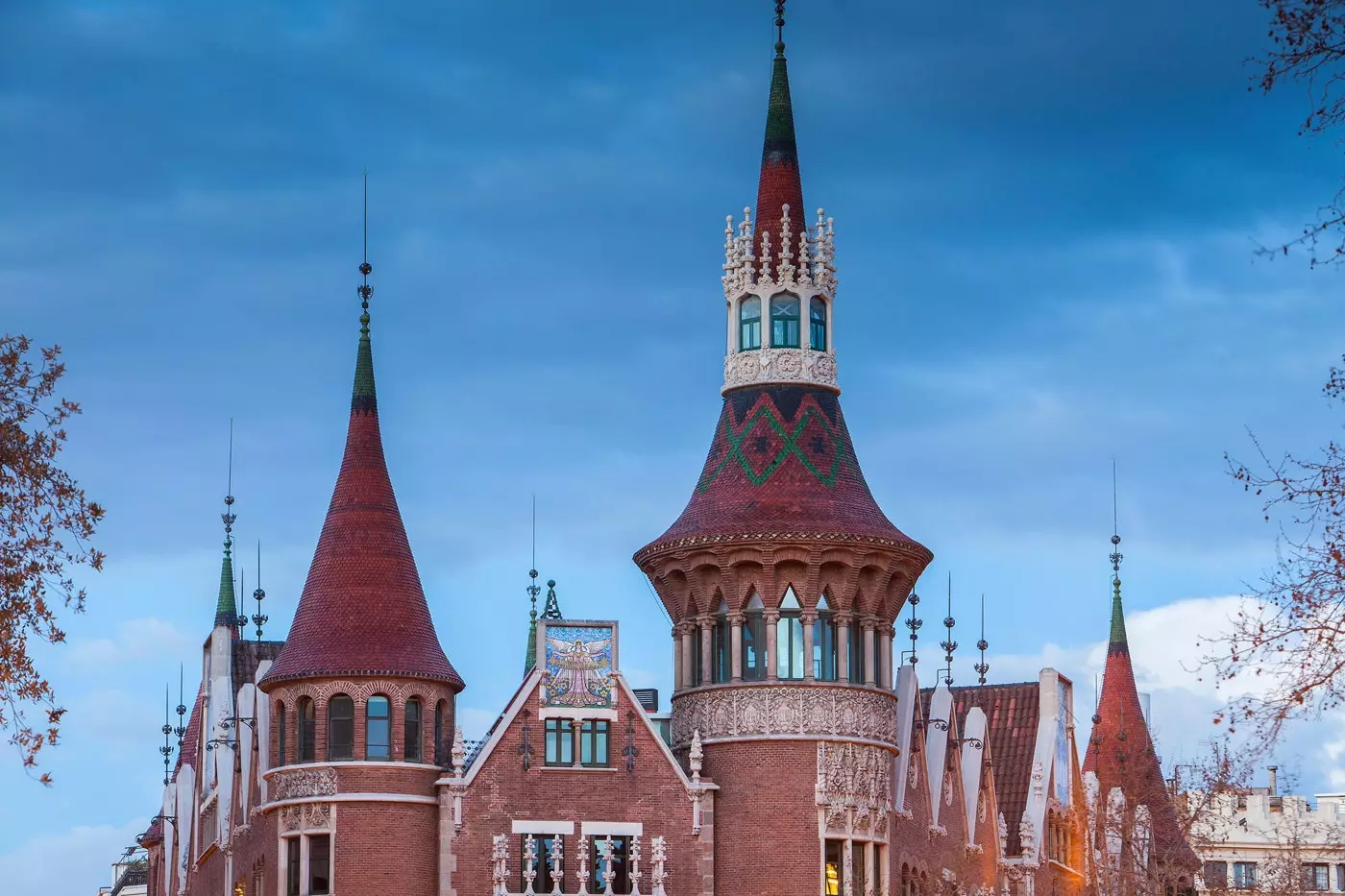
House of Les Punxes
But the search does not end there and another area where you can enjoy Barcelona with the "dragon hunt" as the common thread is the Ciutat Vella neighborhood , where Roman ruins and medieval vestiges coexist creating one of the most varied districts of the metropolis.
Perhaps the most colorful dragon of all due to its color, shape and location is that of the House Bruno Pictures , located at number 82 of the Rambla and whose reform was commissioned, in 1883, by the architect Josep Vilaseca i Casanovas . The building was a pioneer of Catalan Modernism and for some time it was used as an umbrella shop, which is why it is still known as House of the Paraigües. In its colorful façade, a large wrought iron Chinese dragon predominates, accompanied by parasols, umbrellas and fans in memory of the old trade that existed there. Its curious decoration blends with the atmosphere and colors of the Ramblas, making it an unavoidable stop for walkers.
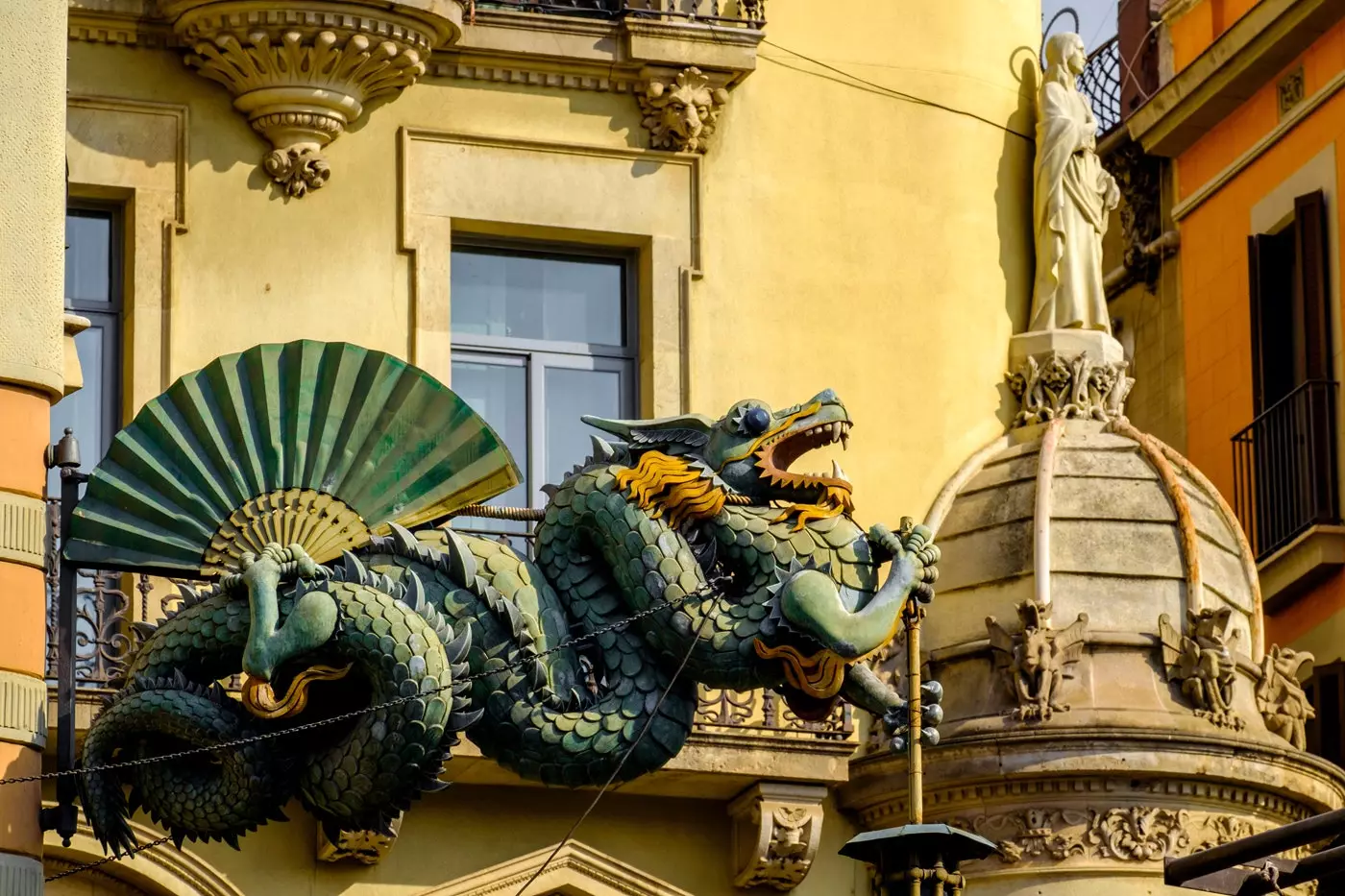
House of the Paraigües
The Palau de la Generalitat has been, since its inception, the headquarters of the Generalitat of Catalunya . On the façade facing Carrer del Bisbe, a large Gothic medallion stands out with Saint George on horseback killing the dragon and, below them, a succession of gargoyles, one of which symbolizes the princess of the legend. Due to the shape of the helmet worn by the knight, he is known as the "Sant Jordi Astronaut" . But this is not the only representation that can be seen in the Palau, because in the Renaissance façade that is located in the Plaça de Sant Jaume , another dragon is slain in the epic fight.
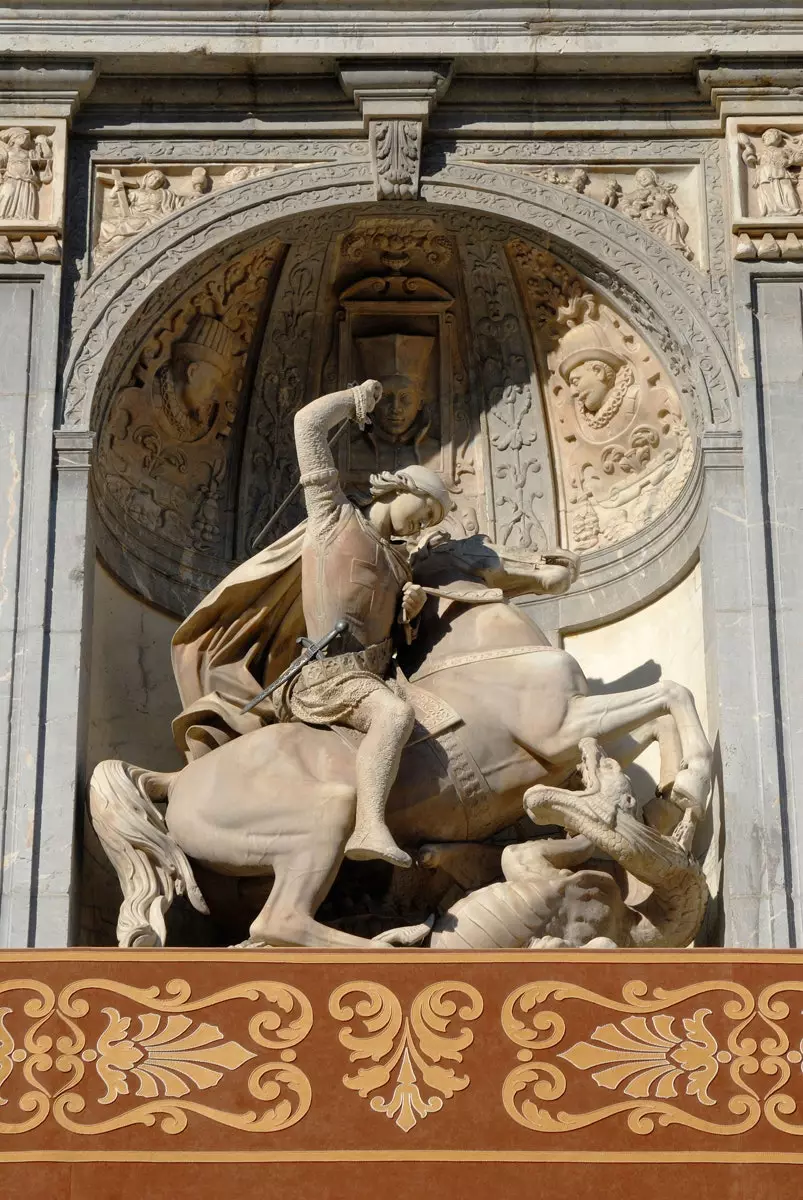
Generalitat of Catalunya
But without any doubt, the fiercest of all these legendary beings is the one that, wrought in forge, defends the entrance of the Pavilions of the Finca Güell. In the Pedralbes neighborhood , in the number 7 of the homonymous avenue, are the pavilions of this estate built by Gaudí in 1887 . And on the wrought-iron gate, a dragon with bat wings and gaping jaws shows his tongue. The metal-winged dragon gate is possibly one of the architect's most popular creations, and represents Ladon, the dragon who in Greek mythology was Hercules' adversary in his eleventh task.
With or without wings, these and many other dragons are hidden throughout Barcelona and although some seem to prefer to go unnoticed, they protect the city while waiting to be discovered.
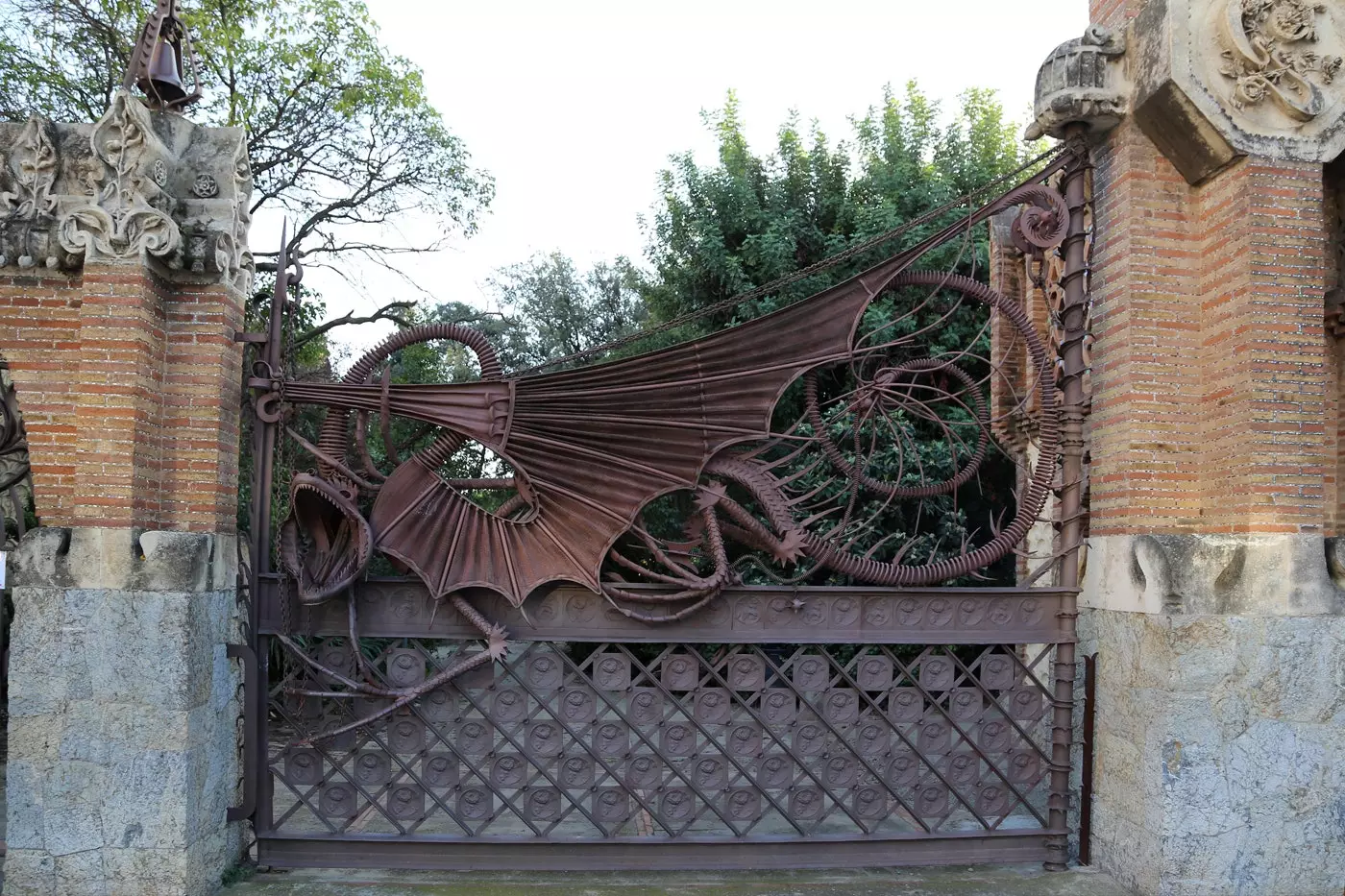
Entrance to the Güell pavilions
